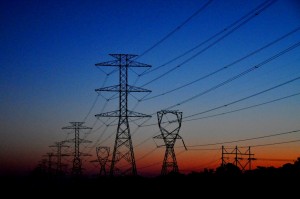 Making use of energy efficiency can help contain the cost of complying with the EPA’s Clean Power Plan and reduce electricity bills. Yet as climate policy discussions try to balance the urgent demand for quick action with upfront capital investments, the benefits of energy efficiency must be viewed in the long term. As efficiency programs are being ramped up by utilities with an over-capacity of power plants, rates may rise for a few years before they fall. Policymakers and stakeholders need to get past “rate fixation” to see the long-term value of energy efficiency. With the strong “nudge” of the Clean Power Plan, we have an opportunity to cut future electricity costs while addressing climate change.
Making use of energy efficiency can help contain the cost of complying with the EPA’s Clean Power Plan and reduce electricity bills. Yet as climate policy discussions try to balance the urgent demand for quick action with upfront capital investments, the benefits of energy efficiency must be viewed in the long term. As efficiency programs are being ramped up by utilities with an over-capacity of power plants, rates may rise for a few years before they fall. Policymakers and stakeholders need to get past “rate fixation” to see the long-term value of energy efficiency. With the strong “nudge” of the Clean Power Plan, we have an opportunity to cut future electricity costs while addressing climate change.
The Clean Power Plan allows states to implement their goals through “building blocks”, including energy efficiency. By placing a value on reducing the CO2 intensity of electricity, more energy efficiency measures become cost-competitive. As energy is used more efficiently, non-competitive plants can be retired, new plants can be deferred, and transmission and distribution infrastructure investments can be postponed, all of which can lower long-term costs.
The payback may be delayed because of the lag between demand reductions and cost savings. During this period, the stigma associated with rising rates needs to be contained. Particular attention should be paid to ensuring that efficiency programs include low-income households as a means to defuse concerns over short-term cost increases. Our electric system was built by taking a long-term approach and the Clean Power Plan affords us a chance to capitalize on efficiency investments that can pay long-term dividends.
We’ve seen this discussion arise more frequently, particularly in the Southeast, where historically low rates are rising in response to a variety of factors. In the context of decision makers… Read more »
Thank you. My thoughts exactly.
Cyrus, Thanks for expanding on the difference between electricity rates and bills. You’re right that the debate about rates is particularly vocal in the Southeast where electricity prices are rising… Read more »
Marilyn has, as usual, articulately framed an important issue. I can think of couple of ways that the Clean Power Plan shifts the framework for energy efficiency: 1. In a… Read more »
Great comments, Bill. Your note that energy efficiency can reduce wholesale electricity and natural gas prices is very important, in my opinion. It means that EE can benefit every customer in… Read more »
Energy efficiency (EE) due to technological improvements alone (as opposed EE driven by price signals) leads to increased use of total energy, not less. This is known as Jevons Paradox,… Read more »
Dan, Good points. The rebound effect, indeed, needs to be considered. And economists, beginning with Pigou in 1920, have agreed that taxing negative externalities is the most efficient policy approach,… Read more »
Marilyn Brown is right on point, that energy efficiency will stabilize electric rates, lower water use, significantly reduce emissions. In fact, it is always less expensive to save energy than… Read more »
Scott, Thanks for highlighting the role of regulators. The coupling of profits (return on equity) to electricity sales provides counter-productive incentives and certainly is a hindrance to energy efficiency. Regulatory changes… Read more »
I’d like to introduce a little bit of a different focus than the rest of the comments here by focusing on the equity component of Dr. Brown’s post. Working to… Read more »
Matt, Thanks for highlighting the role that cities can play in delivering EE to households, and especially to those living in affordable multi-family housing. I look forward to watching the… Read more »
Thanks for mentioning Energy Efficiency for All, a project driven by 4 national partners — Energy Foundation, National Housing Trust, Natural Resources Defense Council and Elevate Energy. We are working… Read more »
Thanks for posing this question and for acknowledging the potential of efficiency programs. I would agree with Scott … the utility of the future will look very different. Jon Wellinghoff… Read more »
Jane, You’ve outlined two of my favorite approaches to financing energy efficiency: on-bill financing and PACE. For on-bill financing, it’s important that utilities ensure “bill neutrality.” If the program performs… Read more »